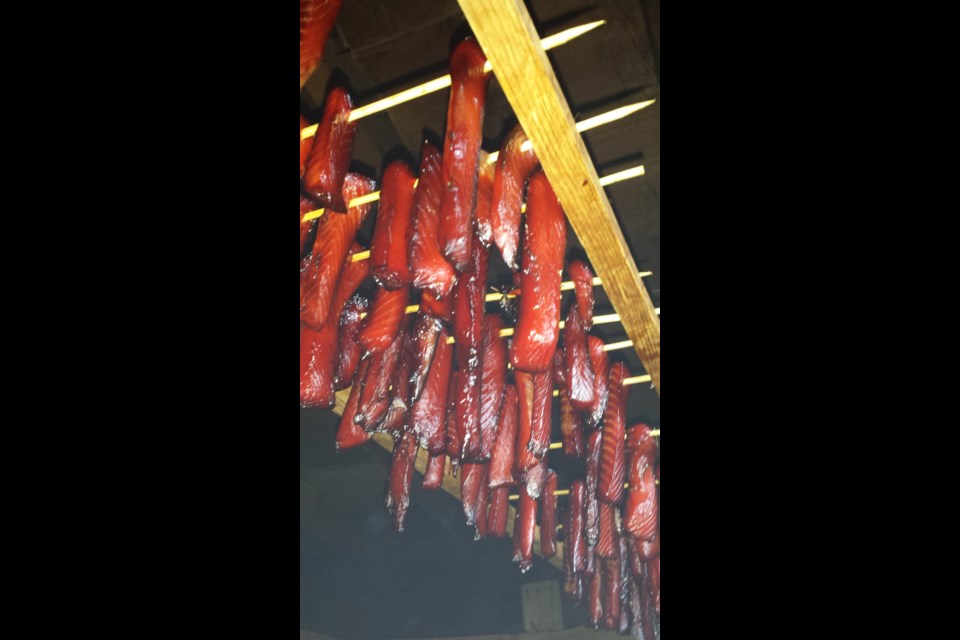When interim B.C. Green Party Leader Adam Olsen saw a pipeline company asking the Kwantlen First Nation about how much B.C. aboriginals catch and use local fish, he decided to take action.
“First, I sent them a picture of my brother smoking fish outside,” said Olsen, who is from the Tsartlip First Nation. He will make a presentation at the Trans Mountain pipeline expansion project hearings as an intervener in November, speaking about aboriginal territories.
Kinder Morgan, which operates the pipeline, wants to twin its 1,150-kilometre line from Alberta to Burnaby, increasing oil capacity to 890,000 barrels per day from 300,000. This could increase the number of tankers moving through the Strait of Georgia, Juan de Fuca Strait and Salish Sea to 34 ships a month from five.
At the hearing, Kinder Morgan lawyer Terri-Lee Oleniuk asked the Kwantlen leaders what proportion of their diet came from the Fraser River. The question was lambasted by First Nations leaders, who found it ignorant.
The company later clarified in a statement: “The question was asked by our counsel in a formal NEB hearing and was intended as an opportunity for the nation to complete the record on traditional land use rather than challenge the evidence of the nation.” Nevertheless, Olsen was inspired by the debate.
“I realized if I’m proud of the fish we got, many others are too. So I put a call out on Facebook for photos of food fish,” said Olsen. The response was overwhelming — more than 32,000 views, 500 shares and 1,000 photos came in from dozens of communities within a few days.
“Traditional use and interaction with fish can sometimes be confused as something in the past. But we do this every year. It’s very relevant and important to us,” Olsen said.
He quickly set up a Facebook group called Show Kinder Morgan Your Food Fish! and more posts came in, showing a snapshot of First Nations use of local seafood around the province.
They include a Brentwood Bay grandfather showing traditionally smoked salmon to his grandson, a four-year-old learning to spear fish in Cowichan, slats of pink salmon drying in a smoke shed near Lantzville, an elder canning salmon in Sliammon, salmon fishermen on the Fraser river with their catch and sundried oolichan in the Nass Valley.
Many of those posting wrote that they eat fish three or four times a week and use preserved fish as sustenance throughout the year.
Sacheen Seitcha, who lives in Maaqtusiis village and is from Ahousaht, sent a photo of her eight-year-old grandson Coda holding a salmon.
“We love getting our fish and teaching the children of the importance of salmon and other seafood to our Nuu Chah Nulth people and how we should be grateful we can eat our traditional foods and have food over the winter so we do not rely on the grocery store,” said Seitcham noting the grocery story is a $40 one hour boat ride away. “We love our fish food and hope that no tankers or pipelines harm the fish or the animals we rely on for food. That is why Kinder Morgan must know this is too dangerous of an endeavour to undertake.”
Other photos show WSANEC (Saanich) members making a return to traditional methods of reef-net fishing.
“This method of fishing was unique to Strait [Coast] Salish. We all fished this way,” said Nick Claxton, an indigenous adviser and program co-ordinator at the University of Victoria who is also completing his doctoral research on the fishing method.
Claxton said the reef-net method, which uses a large net dragged between two canoes, was outlawed for a period in the early 1900s and eventually phased out of use.
“I started to learn about this over many years, spending time with uncles and grandfathers,” he said, adding it was a conversation with Olsen that prompted him to look into reviving reef netting. “I looked to the community for interest.”
An elder suggested they build a ceremonial model first. Then, in late August, community members went out in two canoes to try the method.
“We didn’t catch any fish, but I saw it as a planting of the flag in doing this,” Claxton said. He said the day motivated the community to learn more about reef-netting, mainly from the Lummi First Nation in the San Juan Islands, who revived it a few years ago.
Claxton said the proposed pipeline project poses a serious risk to First Nations fishing and ways of life.
“I feel really threatened by it because the proposed route is right through the middle of our waters,” Claxton said. “If there was a spill that would affect everything, but even the idea of increased traffic poses major problems.”
Vancouver Island First Nations eat an average of 60 kilograms of seafood a year, 15 times more than the Canadian average, according to a 2008 study from the federal fisheries department and the University of Victoria. Ninety per cent of the seafood is harvested locally, not bought from grocery stores.
In 2001, B.C.’s fishing industry was determined by the province to have a wholesale value of $1.4 billion and employ thousands of people.
“This is an extremely important part of who we are as British Columbians, expressed eloquently by First Nations, but integral to everyone,” Olsen said. He plans to use the photos in a slide show presentation at the NEB hearings.



